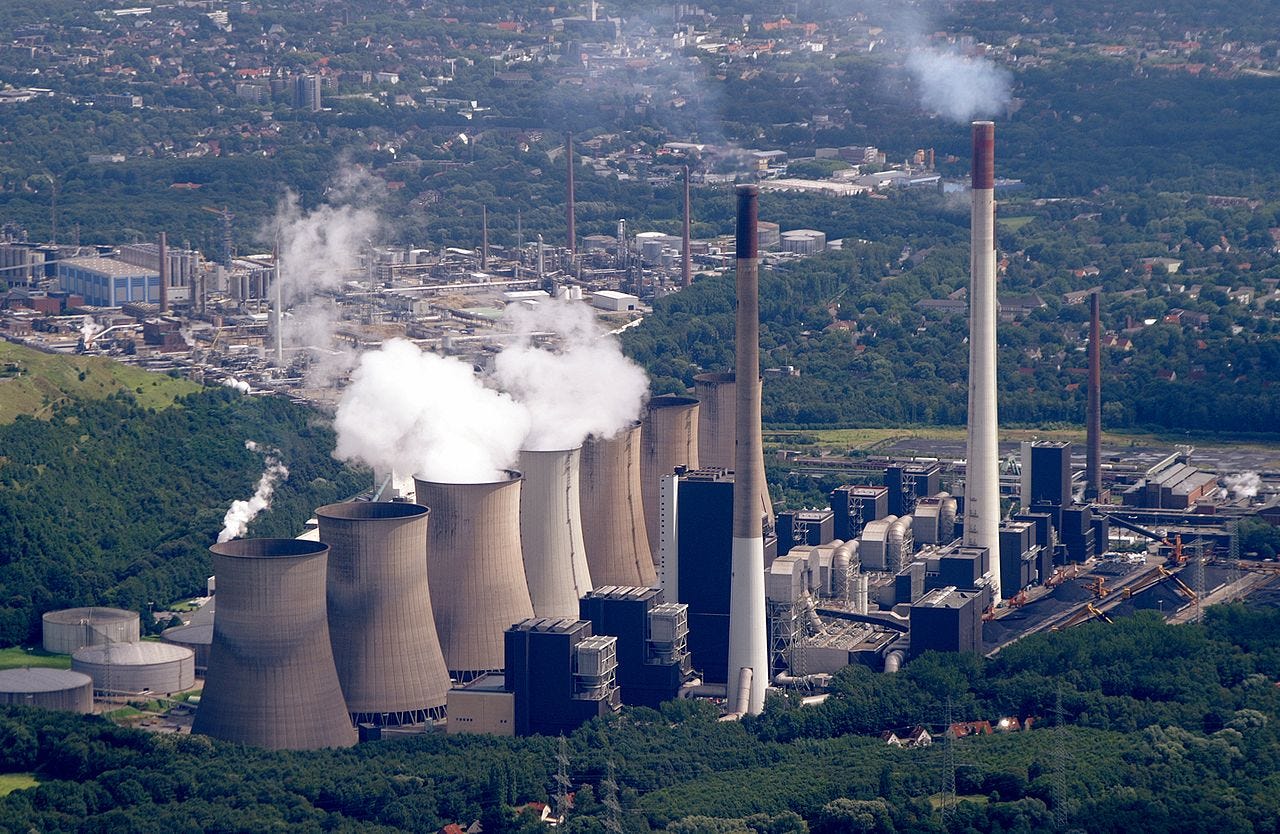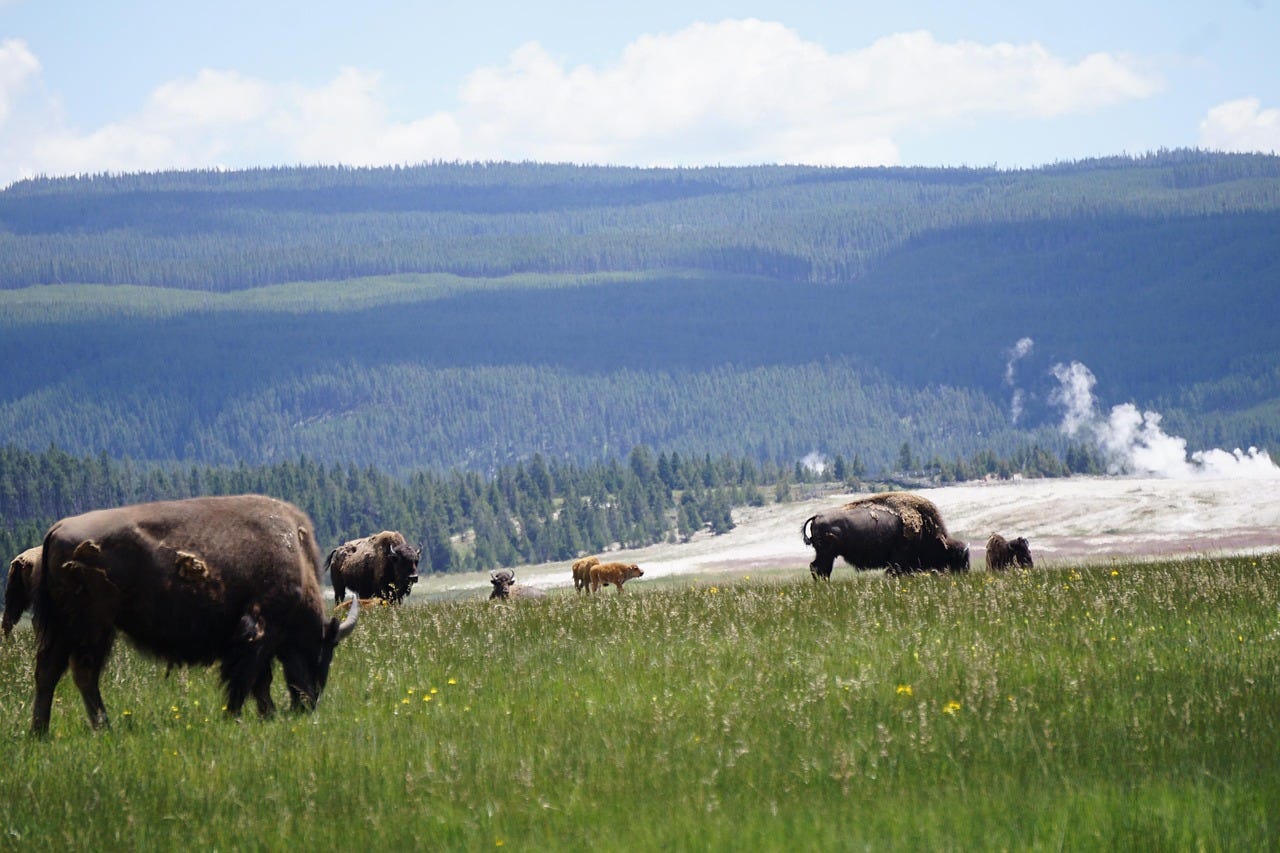Germany sends mixed messages on cutting pollution
Plus, Orsted, Trump and the attack of the killer (offshore wind farm) drones
In today’s edition:
— Germany sends mixed messages on cutting pollution
— Orsted investors and the attack of the killer (wind farm) drones
— New study raises odds of economic risk to climate change by end of century
— New Orleans spent billions on flood protections after Hurricane Katrina. Now they’re sinking
— Where the buffalo roam. Bison herds help renew environment in Yellowstone

Just days after the ill-fated Net Zero Banking Alliance said it would halt activities and vote to drop its membership structure after a series of defections and an increase in legal threats, Deutsche Bank DB 0.00%↑ came out this week to say it will stick to its carbon emission reduction targets for 2030 and 2050.
The statement, part of an updated climate transition plan, came through as the German government made it harder for the country’s largest bank to do so by saying the country had already met its 2028 targets for reducing coal power generation so wouldn’t need to shut down any more coal plants for the time being.
That is somewhat like saying we’re ahead of our targets to lose 20 pounds by Christmas so we will continue eating cookies at least until Halloween. It’s not about the meeting targets it’s about cutting pollution.
In a Europe where power costs and power security have become increasingly important, Germany is among the countries most vexed by politics and climate economics. It has pledged to cut coal entirely by 2038 and is a leader in renewable energy, but it’s also still Europe’s largest fossil-fuel producer.
It shut down its last nuclear power plants two years ago but is now debating whether to invest in nuclear power again along with the rest of Europe.
Given the back and forth at the government level, Deutsche Bank’s commitment is laudable, but we’ll wait to see the results.
It’s not too late
For just a few more days, Callaway Climate Insights will be available to new subscribers for less than $5 a month for the first year. Take advantage now to get the best of our daily global climate analysis. Please subscribe with our special Labor Day sale offer.
Tuesday’s subscriber insights
Attack of the killer (wind farm) drones
. . . . When the White House announced it would halt operations at Orsted (DK:ORSTED)'s Revolution Wind project off the Connecticut shore last month, citing national security concerns, it sounded like a bit of a stretch.
But when U.S. Interior Secretary Doug Burgum told CNN last week that the government feared the ocean apparatus would be used to disguise attacks by "swarm drones" it became clear what a gigantic leap from reality it was.
President Donald Trump’s hatred of wind farms has never been fully explainable, but it seems his cabinet is conjuring up new dangers to try to justify a move that will deprive millions in New England of essential energy, raise prices and destroy jobs by killing the project only months before it was completed.
I have become somewhat a student of drones in recent years after using them in my new novel, “Unregulated Militia” as the mechanism for a series of aerial attacks on the U.S. to destabilize the government. While undersea drones are indeed a thing, and a valuable way to monitor ocean movements, including of enemy
seacraft, the idea of an attack by swarms of drones on a wind farm comes with no evidence or scientific speculation whatsoever.
It is conceivable and even laudatory that amid the surge in drone attacks in Russia and Ukraine, U.S. defense leaders are becoming more concerned that attacks could take place closer to home. But even then, why broadcast those concerns on television. What other offshore activity will the White House want to restrict to prevent these “swarm drones.”
Suffering Orsted and other wind energy investors want to know.
Editor’s picks: The cost of the climate crisis; plus, post-Katrina troubles
Watch the video: Climate scientists warn of climate disaster. But economists? Many say the economic hit from global warming will be negligible. But a new study shows the cost could be much worse than we once thought. In this episode of PBS Terra, see how much poorer we could be in 2100. This report breaks down why previous models got it wrong, what this study means for our future, and the “goldilocks” path to decarbonization.
Sinking post-Katrina levees need upgrades
A system of 350 miles of flood walls and levees, costing more than $14 billion, was built in five New Orleans parishes after Hurricane Katrina. Twenty years on, the tragedy continues: The flood protection system is slowly sinking, losing height while sea levels rise and potential storm surge threats increase, Thomas Frank reports for E&E News. The levees need an estimated $1 billion in upgrades and the city’s levee and flood wall system must be raised or the region could become ineligible for federal flood insurance. And a small weakening of protection could hammer the New Orleans economy by making hundreds of thousands of property owners ineligible to buy federal flood insurance, the report notes. “Sea levels along the Southeast and Gulf coasts have risen since 2010 at rates ‘that are unprecedented in the last 120 years,’ according to a study by Tulane University scientists. … Also, land in the New Orleans area is sinking — or subsiding — as water, oil and gas are extracted from below the ground and as the region’s soft soil compresses under the weight of levees and 32-foot-high concrete flood walls,” E&E reports.
Data driven: On the range
Where the bison buffalo still roam
The far-ranging and giant herds of bison that once roamed America’s grasslands provided ecological benefits that are only now being understood, Kurt Repanshek reports for National Parks Traveler. A seven-year study of Yellowstone National Park herds, published recently in the journal Science, reveals that vast herds of bison slowly moving across the landscape consume a lot of vegetation, but in doing so they also stimulate a protein-rich revegetation of grasslands. William Hamilton, one of the three authors of the paper, told National Parks Traveler, “that organic matter serves as a source for decomposition that then recycles nitrogen back into primary producers, grasses and forbs in the case of Yellowstone grasslands.” According to the research, bison grazing in Yellowstone produced 156% more crude protein in “grazing lawns,” parts of Yellowstone that contained “short, nutritious vegetation that supports a diverse array of plant and animal species.” Even on dry hillsides the animals' eating habits led to 119% more crude protein in the renewing vegetation. The report notes that there are currently an estimated 400,000-500,000 bison in North America, the vast majority in commercial herds. A much smaller fraction, like those in Yellowstone and tribal herds, are in conservation herds managed in part to protect their gene pool. North American bison populations were hunted to near extinction in the late 1800s and in 1890, there were only about 1,000 left. That’s down from an estimated 30 million to 60 million around 1800. Fun facts about bison: Yes, technically, bison is the correct term for the mammals in North America. Their full latin name is bison bison bison. True buffalo are confined to Africa and Southeast Asia. We suggest there’s no need to be pedantic, however. It’s OK to ask where the buffalo roam. The Nature Conservancy points out that full-grown bison bulls stand about 6.5 feet at the shoulder and can weigh up to 2,000 pounds. They rarely eat wildflowers, but prefer young, tender grasses and can consume more than 30 pounds of grass (air-dry weight) in a day. Admire them from a distance. They do not want to take a selfie with humans.



